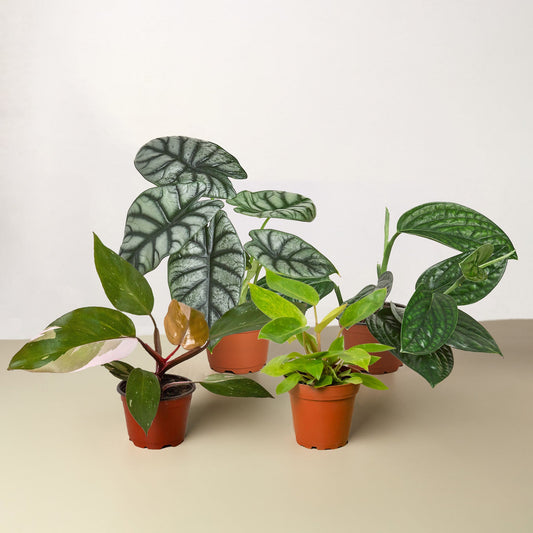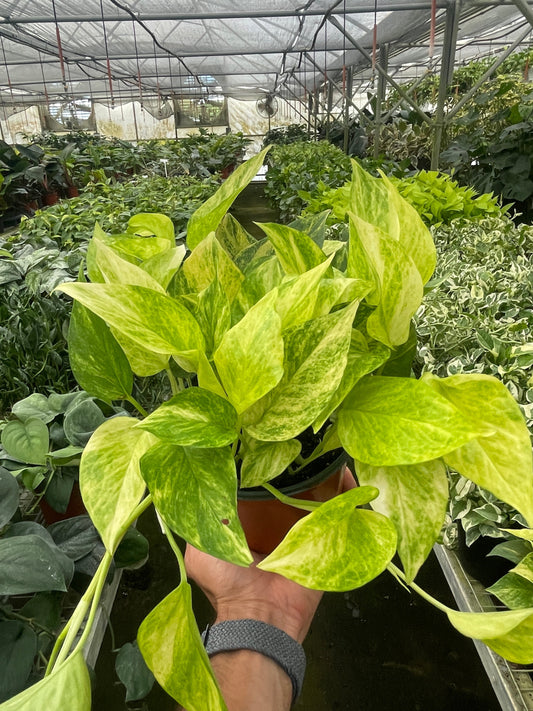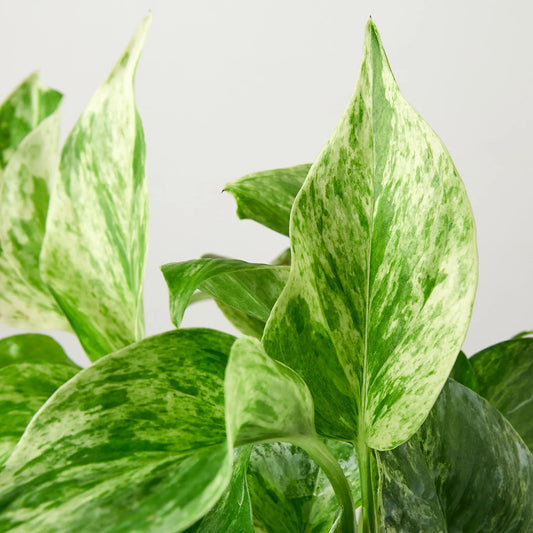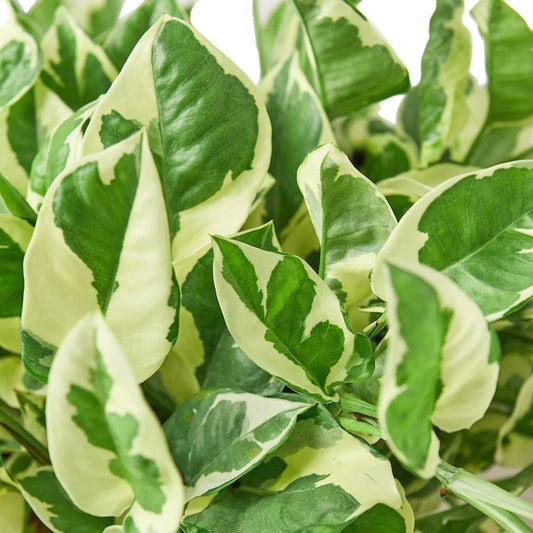Network Calathea Aerial Roots: Everything You Need to Know
Cafe Planta Team
Calathea plants are known for their stunning foliage and vibrant patterns, making them a popular choice among plant lovers. But if you've ever noticed some unusual roots sprouting from your Calathea's stems, you might be curious about what they are and what they mean for your plant's health. These intriguing features are known as aerial roots, and they can be a fascinating aspect of your Calathea's growth.
This article will take you on a journey through the world of Calathea aerial roots, specifically focusing on the Network Calathea variety. We'll explore what these roots are, why they develop, and how they fit into your plant's overall care routine. You'll also learn practical tips for managing aerial roots and incorporating them into your indoor garden design.
What Are Aerial Roots?
To kick things off, let's talk about what aerial roots actually are. Unlike the roots you typically find buried in soil, aerial roots grow above the ground. They can be seen in various plant species, including orchids, philodendrons, and, of course, Calatheas. These roots serve different purposes, depending on the plant species.
For the Network Calathea, aerial roots can help the plant anchor itself, especially when it grows in its natural habitat, which is often on the forest floor where soil can be loose. They can also assist in absorbing moisture from the air, which is a handy adaptation for plants that thrive in humid environments. In the cozy confines of your home, these roots are mostly a sign that your plant is adapting to its surroundings.
Interestingly enough, these roots might look a bit odd, but they're completely normal and nothing to worry about. In fact, they tell you a lot about how your plant is feeling. If your Calathea is producing aerial roots, it might be trying to find more stability or seeking extra moisture. Either way, it's just your plant doing its thing!
Why Do Network Calathea Develop Aerial Roots?
The development of aerial roots in Network Calathea can be influenced by several environmental factors. One of the primary reasons is humidity. Calatheas are native to tropical regions and love high humidity levels. When the air around your plant is humid, it might encourage the growth of these roots as the plant aims to capture more moisture.
Another reason could be the plant's attempt to anchor itself more securely. Aerial roots provide additional support, especially in nature where conditions are less predictable than in a controlled indoor environment. If your Calathea is growing rapidly, you might notice these roots appearing as the plant tries to stabilize itself.
Finally, your plant might be responding to a need for nutrients or more space. Sometimes, aerial roots develop when the plant's soil is compacted, reducing the availability of nutrients. These roots can extend into the air to explore new opportunities for absorption, almost like sending out little explorers on a mission!
How to Manage Aerial Roots
Now that you know why your Network Calathea might be growing aerial roots, let's talk about how to manage them. First and foremost, you should never cut them off. These roots are part of your plant's natural growth process and, in many cases, are beneficial.
If the aerial roots are becoming too long or unruly, you can gently redirect them back into the soil. This can help the plant absorb more nutrients and water, while also keeping the appearance tidy. Use a soft, gentle touch to avoid damaging the roots.
- Check Humidity Levels: Ensure your Calathea is getting enough humidity. You can use a humidifier or place a tray of water near the plant to increase moisture in the air.
- Soil Condition: Ensure your plant's soil is well-draining and not overly compacted. This will encourage healthy root growth and reduce the need for aerial roots to seek additional nutrients.
- Support: If your plant is growing tall and seems a bit unstable, consider using a stake or support to help it stand upright. This might reduce the plant's reliance on aerial roots for stability.
Incorporating Aerial Roots into Your Plant Design
From a design perspective, aerial roots offer a unique opportunity to add an interesting element to your indoor garden. Instead of viewing them as an oddity, consider them a feature that enhances the natural beauty of your Network Calathea.
One way to embrace aerial roots in your design is to use decorative pots and planters that complement the plant's appearance. Aerial roots can be accentuated by placing your Calathea in a taller pot or on a plant stand, allowing the roots to dangle artistically.
You might also want to create a small indoor jungle by grouping your Calathea with other plants that have similar care needs. This not only creates a lush, tropical vibe but also helps maintain humidity levels around your network of plants, benefiting the aerial roots and the plant as a whole.
Signs of Healthy Aerial Roots
Observing aerial roots can provide valuable insights into your Calathea's overall health. Healthy roots will appear firm, with a consistent color that matches the rest of the plant. They should not be dry or brittle, as this could indicate a lack of humidity or moisture in the air.
On the flip side, if you notice any signs of rot or mushiness, this could be a sign of overwatering or excessive humidity. In these cases, it's important to adjust your watering routine and ensure good air circulation around your plant.
Regularly check the condition of your Calathea's aerial roots, as they can be an early indicator of changes in your plant's environment. By staying attentive, you can make the necessary adjustments to keep your plant thriving and happy.
Common Issues and Troubleshooting
While aerial roots are generally harmless, there are a few issues you might encounter. If your Calathea is producing an excessive number of aerial roots, this could indicate that your plant is stressed or not getting what it needs from its environment.
One common issue is low humidity. If you notice an increase in aerial root growth, it might be time to boost the humidity around your plant. Consider using a pebble tray or a humidifier to create a more suitable environment.
Another potential problem is nutrient deficiency. Aerial roots can signal that your plant is searching for additional nutrients. Check your soil and consider using a balanced fertilizer to ensure your Calathea has everything it needs.
Caring for Your Network Calathea
Beyond managing aerial roots, caring for a Network Calathea involves several other important aspects. These plants thrive in indirect light, as direct sunlight can scorch their leaves. A spot with filtered light or a north-facing window is ideal.
Calatheas prefer their soil to be consistently moist but not waterlogged. Overwatering can lead to root rot, so it's crucial to check the top inch of soil before watering. If it feels dry, give your plant a drink. Otherwise, hold off a bit longer.
Temperature is another factor to consider. Calatheas enjoy warm temperatures, ideally between 65-80°F (18-27°C). Keep them away from cold drafts or sudden temperature changes, as these can stress the plant and lead to leaf curling or browning edges.
Potting and Repotting Your Calathea
When it comes to potting your Network Calathea, choose a container with good drainage to prevent water from accumulating at the bottom. A well-draining potting mix, such as one that includes peat moss and perlite, will provide the right balance of moisture and aeration.
Repotting is typically needed every couple of years, or when you notice the plant becoming root-bound. Spring is a great time to repot, as the plant is entering its growing season and can quickly adjust to a new container. Be gentle during the process to avoid damaging the roots, including the aerial ones.
If you do encounter any challenges, such as root rot, during repotting, it's best to address these issues promptly. Trim away any affected roots, repot in fresh soil, and adjust your care routine to prevent recurrence.
Conclusion
Network Calathea aerial roots might seem unusual at first, but they're a natural part of your plant's growth and adaptation. By understanding these roots and incorporating them into your plant care routine, you can enjoy a thriving Calathea that brings beauty and vibrancy to your home.
At Cafe Planta, we're passionate about helping you care for your plants. If you have any questions or need advice, don't hesitate to reach out via email or Instagram. Whether you're a seasoned plant parent or just starting your journey, we're here to support you every step of the way.



















